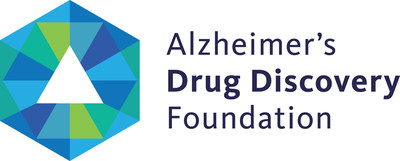Study exemplifies how ADDF funding fuels progress of innovative science guided by the biology of aging for future of Alzheimer’s treatment.
NEW YORK, May 17, 2024 /PRNewswire/ — A study published today in Nature Medicine found that a novel neuroprotective drug candidate, LM11A-31, was safe and well-tolerated following dosing for 26 weeks in patients with mild to moderate Alzheimer’s disease. LM11A-31 also slowed the progression of multiple spinal fluid and imaging biomarkers. These encouraging results support LM11A-31 being studied in a larger trial to further evaluate its safety and efficacy. The study, which received funding by the Alzheimer’s Drug Discovery Foundation (ADDF), reflects ongoing progress as the field moves towards a broader approach guided by the biology of aging, building the arsenal of Alzheimer’s treatments needed to complement existing anti-amyloid therapies for combination treatment.
“Studies like this one are moving us closer to the day when we could have a pill to help treat Alzheimer’s,” says Howard Fillit, MD, Co-Founder and Chief Science Officer of the ADDF. “A decade ago, it was unimaginable to see a novel drug advance to this stage in the pipeline. These results are indicative of the rapid evolution of the field. Neuroprotective drugs represent the type of therapies that will define the next generation of Alzheimer’s treatments, which will target the underlying biology of the disease in a combination therapy and precision medicine approach, similar to cancer care.”
Phase 2a exploratory studies, such as this one, that meet their primary endpoint are valuable for generating safety and tolerability data in the target population and providing clinical and biomarker data to design well-informed and rigorous phase 2b and 3 studies.
“We are greatly encouraged by the findings of this study and look forward to uncovering how this drug, which has downstream effects on several aging- and resilience-related pathways, will impact the slowing of cognitive decline in the study’s next phase,” says Frank Longo, MD, PhD, Founder of PharmatrophiX, George E. and Lucy Becker Professor of Medicine and Neurology at Stanford University, and inaugural Goodes Prize honoree. “Without ADDF funding, LM11A-31 would not have reached this milestone. My 25-year-long relationship with the foundation began when this molecule was first discovered in the lab and has catalyzed this drug through basic mechanism and preclinical studies to the clinical phase, showing the importance of advancing translational research that will pave the way for new treatments and prevention strategies for the millions of patients living with this disease.”
LM11A-31 works by activating survival pathways and inhibiting degenerative pathways of nerve cells, addressing several Alzheimer’s-related pathologies including resilience against amyloid, reduction of tau pathology, and reduction of microglial pathology. The compound is being developed by PharmatrophiX, a clinical-stage biopharmaceutical company focused on the development of disease-modifying small molecule drugs targeting neurodegenerative disorders.
These findings are reflective of the broadening and diversifying drug pipeline that looks to address the plethora of causes that lead to Alzheimer’s. Today, nearly 75% of drugs are exploring novel targets like inflammation, metabolic disturbances, and vascular dysfunction. With the advent of new, novel drugs, the next step is to conduct combination therapy trials that explore combining multiple drugs into one treatment regimen.
“It’s harvest time for Alzheimer’s research and the advancement of novel, pleiotropic drugs, like LM11A-31, are the future, showcasing our ability to develop therapies that have the potential to target not one, but several underlying disease mechanisms. This trial underscores the impact of the ADDF’s investments, helping to transform the treatment landscape by catalyzing cutting-edge science,” notes Dr. Fillit.
About The Alzheimer’s Drug Discovery Foundation (ADDF)
Founded in 1998 by Leonard A. and Ronald S. Lauder, the Alzheimer’s Drug Discovery Foundation is dedicated to rapidly accelerating the discovery of drugs to prevent, treat and cure Alzheimer’s disease. The ADDF is the only public charity solely focused on funding the development of drugs for Alzheimer’s, employing a venture philanthropy model to support research in academia and the biotech industry. The ADDF’s leadership and contributions to the field have played a pivotal role in bringing the first Alzheimer’s PET scan (Amyvid®) and blood test (PrecivityAD®) to market, as well as fueling the current robust and diverse drug pipeline. Through the generosity of its donors, the ADDF has awarded more than $290 million to fund over 750 Alzheimer’s drug discovery programs, biomarker programs and clinical trials in 20 countries. To learn more, please visit: http://www.alzdiscovery.org/.
![]() View original content to download multimedia:https://www.prnewswire.com/news-releases/new-study-in-nature-medicine-shows-novel-neuroprotective-drug-candidate-meets-primary-endpoint-in-patients-with-mild-to-moderate-alzheimers-disease-302149206.html
View original content to download multimedia:https://www.prnewswire.com/news-releases/new-study-in-nature-medicine-shows-novel-neuroprotective-drug-candidate-meets-primary-endpoint-in-patients-with-mild-to-moderate-alzheimers-disease-302149206.html
SOURCE Alzheimer’s Drug Discovery Foundation

Featured image: DepositPhotos © Alexraths




